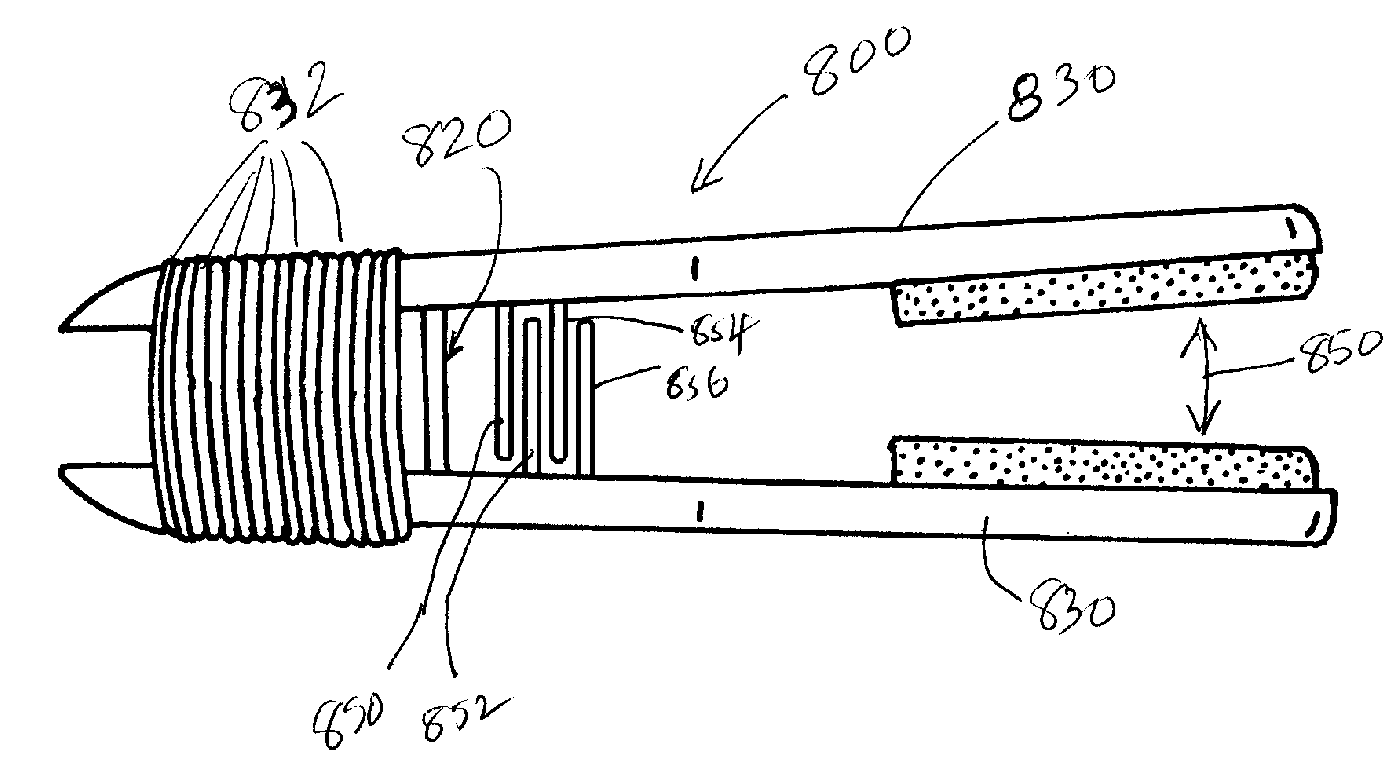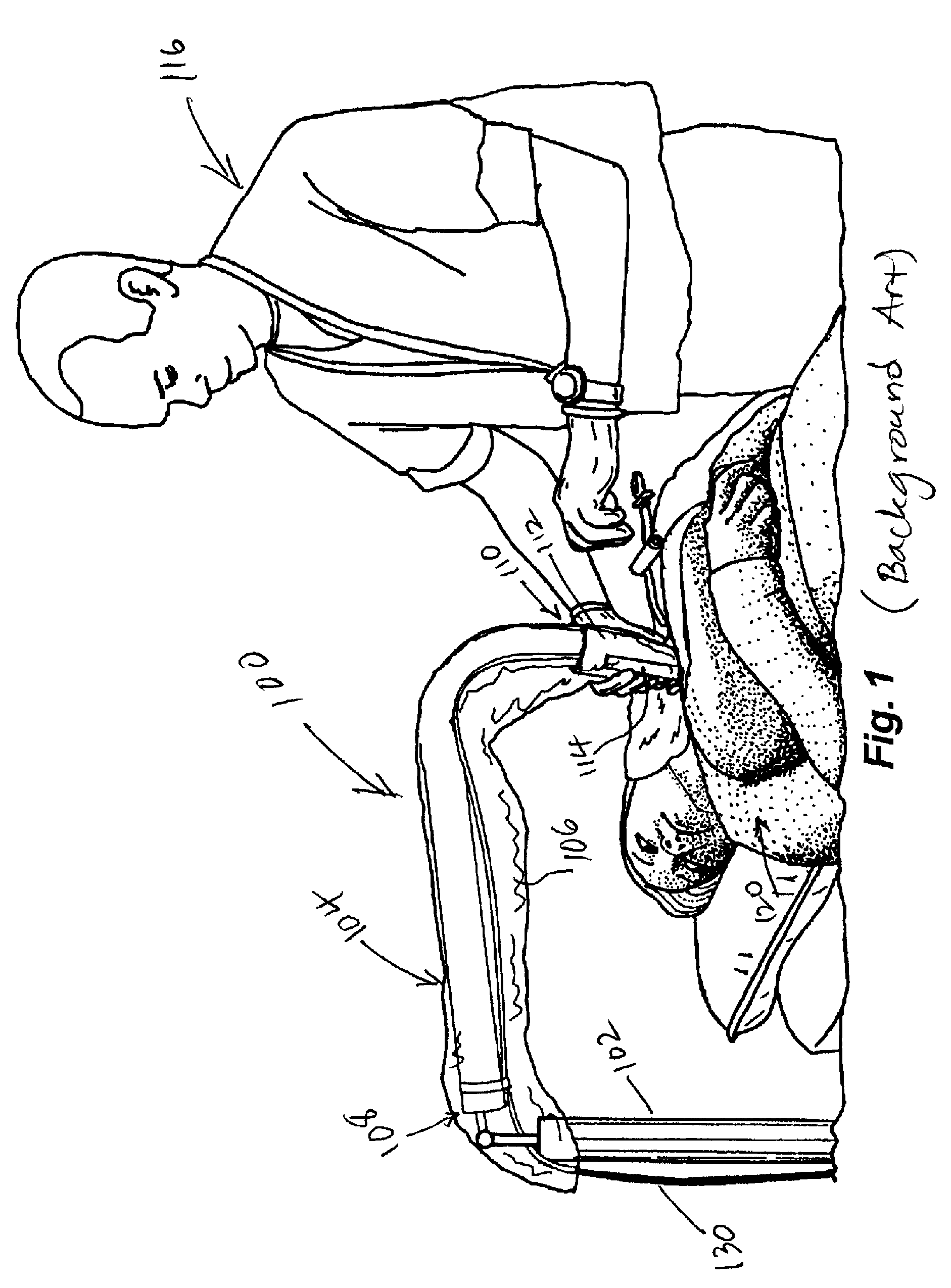Holder for arm-mounted medical imaging probe
- Summary
- Abstract
- Description
- Claims
- Application Information
AI Technical Summary
Benefits of technology
Problems solved by technology
Method used
Image
Examples
Embodiment Construction
[0039]FIGS. 5 and 6, detail a probe mount 500 in accordance with an illustrative embodiment of this invention. The mount 500 is attached to the distal end 502 of a flexible arm 504 that is constructed from a series of interconnected, plastic segments 506 typically in accordance with the above-incorporated U.S. patent application Ser. No. 11 / 338,270, entitled BIOMEDICAL POSITIONING AND STABILIZATION SYSTEM. Alternatively, attachment of the probe mount to any type of flexible, semi-flexible or swiveling arm is expressly contemplated. The distal end 502 of the arm 504 includes a threaded end 510, which includes a male thread in this embodiment. The end 510 engages a female base 512 at the proximal end of the probe holder 500. The base 512 is constructed from polymer for strength and lightness of weight. The base includes a ball end 514, which is described further below. Briefly, the ball 514 engages a pair of holder clamp plates 530 that are identical or similar in this embodiment. The...
PUM
 Login to view more
Login to view more Abstract
Description
Claims
Application Information
 Login to view more
Login to view more - R&D Engineer
- R&D Manager
- IP Professional
- Industry Leading Data Capabilities
- Powerful AI technology
- Patent DNA Extraction
Browse by: Latest US Patents, China's latest patents, Technical Efficacy Thesaurus, Application Domain, Technology Topic.
© 2024 PatSnap. All rights reserved.Legal|Privacy policy|Modern Slavery Act Transparency Statement|Sitemap



